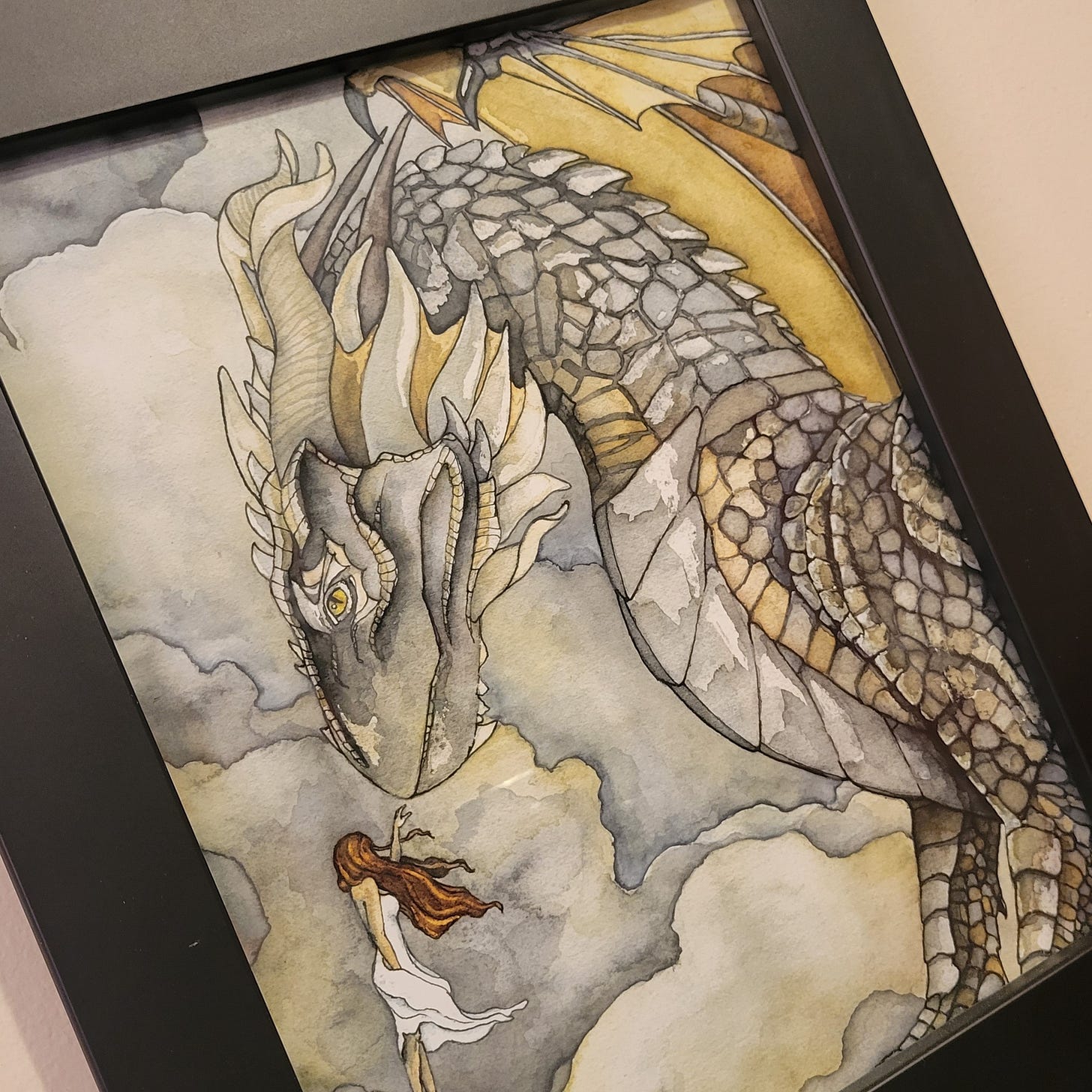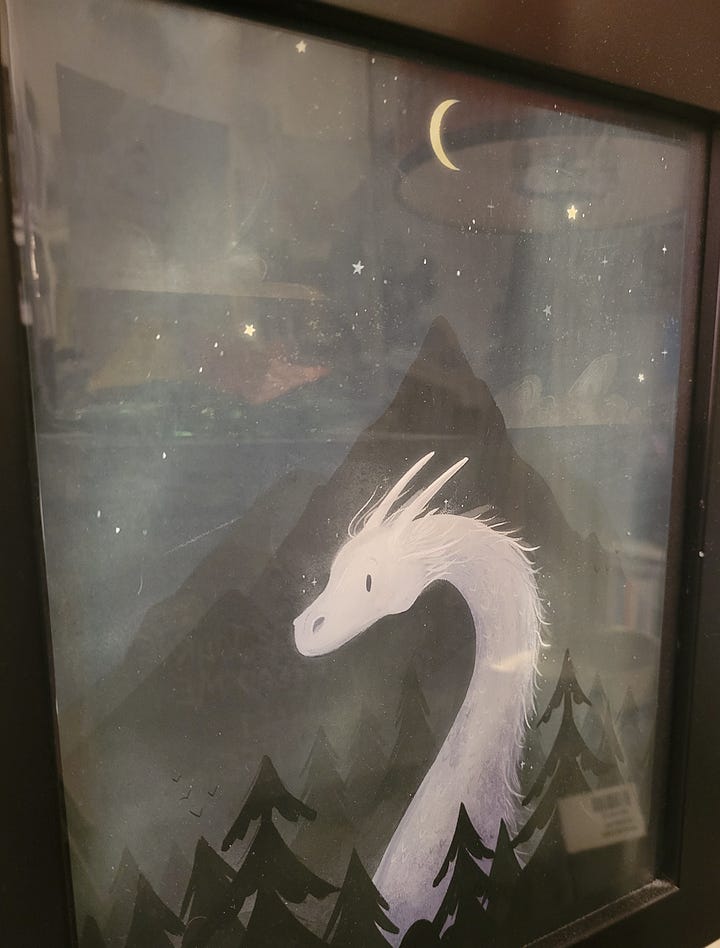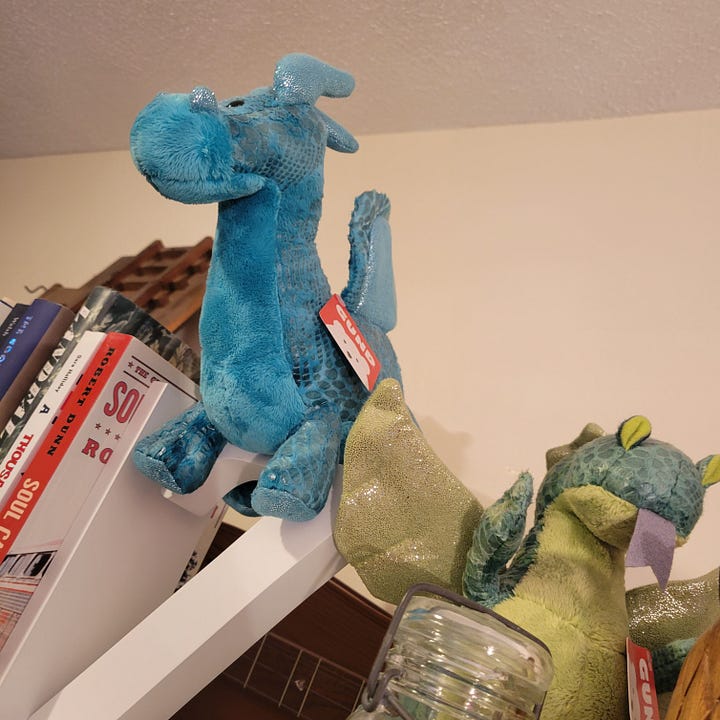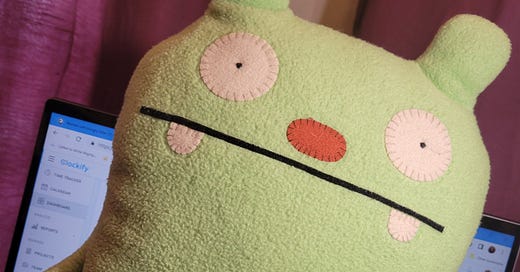I shouldn’t need to remind you that writing doesn’t happen in a vacuum.
I know that.
You know that.
But we forget.
I’m not sure how that’s possible given all the writers I know are trying to write while simultaneously raising kids, caring for elders, working stressful jobs, nurturing relationships, pursuing non-writing hobbies, surviving a pandemic, living with the twin terror of global political unrest and environmental uncertainty, and tending to the Sisyphean chores that come with living in a body that has the audacity to require sleep and bathing daily and food prep three times a day!
Yet somehow they still forget that writing doesn’t happen in a vacuum!
When you tear yourself down for not writing prolifically at a time when you’re dealing with prolific worries, you’re holding your writing self up to an impossible standard and, quite frankly, being kind of a dick to yourself.
You laugh, but it’s true.
How long do you think your friends would remain your friends if you told them that they were lazy or they sucked or their work was meaningless? Not long, I bet, and yet—if you’re anything like me—when your unhinged inner drill sergeant unleashes on you, you just take it.
I should probably pause here to introduce this new Hibou series launching today. MOOD TOOLS is a series devoted to supporting your writing mindset. I know mindset is a bit of a buzzword right now, so let me explain how I define the term. Given that writers don’t write in a vacuum, a writer’s mindset is everything in our lives that supports—or gets in the way—of our writing, from our goals to our writing routines to the very way we talk to ourselves about our writing.
That said, I’ve found that mindset advice to writers is often long on psychological bromides—be disciplined, write like a pro, tame your critic—and short on details about how exactly to apply that advice in real life. So, for the next twelve weeks, Hibou’s MOOD TOOLS will look at tangible tips for improving your writing mindset. No one tool is a panacea, of course, but maybe you’ll find something among the dozen tools offered that helps you to cup your hand around your writing flame for long enough to regroup.
Which brings us back to the question at hand: how do you deal with your inner asshole?
I think the first time I came across the idea of personifying your inner asshole was in an exercise in Julia Cameron’s The Artist’s Way where she recommends that you draw your worst critic as a cartoon and then draw a big X through the image. I never really did the exercise—my biggest critic was my inner asshole, and how was I supposed to draw something I couldn’t see?—but the idea stuck with me.
Years later, when I was working through a sticky widget and my inner critic had found a bullhorn, I was in a toy shop looking for a present for my nephew when a display of brightly-colored dopey plush monsters made me smile. (Such was my introduction to the wacky world of Ugly Dolls). I was instantly drawn to the dopiest doll in the bunch—a lime green weirdo with rounded fangs and surprised eyes that told me he was as shocked to find himself there as I was.
On closer inspection, I learned this dopey dude had a name and a backstory, and it was instantly clear that this was no toy meant for a child but the personification of my inner asshole. You see, this dopey dude’s name was Jeero, and if there’s any better name to personify an inner critic who seems to live to jeer at me, I’d like to hear it.
According to the bio on Jeero’s tag:
Jeero wants to hang out with you. Why? He needs you. Jeero thinks life is so complicated, so he needs you to comfort him. Wags and Babo ask him so many questions, and he isn’t sure what makes them think he has any of the answers. Maybe they think his red nose means he’s Jeero the Wise.
Well, he’s not.
What time is it? Jeero has no idea. How do you get from here to there? Don’t ask! Jeero doesn’t know. Jeero just wants to sit on the couch with you and eat some snacks. Is that too much to ask? Jeero doesn’t know, but he does know that you know it’s time to cancel your plans and hang out with the ugly dolls.
I had no idea who Wags and Babo were, of course, but it didn’t matter. Suddenly my inner critic wasn’t just some nameless asshole but a loveable dope named Jeero, and he wasn’t so much scary as he was scared.
Needless to say, Reader, I bought him, and he remains in my office to this day.
Did I feel silly for buying a child’s toy and personifying it?
A little, sure, but mostly I felt an impish joy, and today, as Jeero stares down at me while I plug away at the current, sorry state of the draft of what will eventually become the essay you’re reading, his dopey face still makes me grin.
Am I suggesting you go out and get yourself an Ugly Doll?
Not exactly, no.
What I’m suggesting is the next time your inner asshole tries to hijack a perfectly productive writing session, consider that maybe your inner asshole is a scared and dopey monster that just wants to be comforted. Now, it’s best if you name your inner critic yourself—naming is the first step to taming, after all—but if you need a little guidance to get started, try calling her Mia (short for My Inner Asshole), and the next time she works up a head of steam, respond to her in the same voice you’d use with a scared and shaking puppy—Oh, Mia. It’s OK! Shh, Mia, shhhhhh.
Will you feel silly?
Probably.
And by probably I mean, you absolutely will feel silly the first time you try this, but, really, what do you have to lose by feeling silly in the privacy of your own head? Because if Mia starts yapping and you feel rattled enough to consider packing in your writing for the day, but instead you say, “shh, Mia, shhhhh,” and smile, well, isn’t that an improvement?
You were rattled and now you’re smiling, right?
And yes, I am suggesting you pretend your inner critic is a shaking dog named Mia, but, really, if you’re a novelist you’re already spending hours playing with your imagery friends, so what’s the harm in adding one more?
I will give you this warning, though.
Playfully personifying your inner critic can become addictive, and I’ll freely admit I’ve become something of a magpie for personified critics. At some point I started to think of my inner critic as a dragon and started to collect sweet-faced dragons who didn’t look like they were capable of breathing enough fire to toast a marshmallow, let alone my dreams. My favorite is this image of a girl petting the nose of a giant dragon because if ever there was an image that said “shhh, Mia, shhh,” it’s this one, don’t you think?
How about you?
How have you tamed your inner dragons?








Thank you Cathy soooooo much for helping me realise what a dick I am to myself, when instead of healing I tell my poor brain, overloaded with having to heal my broken body, that I SHOULD still write and create daily. And I love the idea of Mia - fa-bu-lous!!!! Thank you soooo much again. I cannot wait for the next essay :)